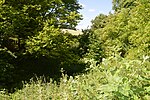Preston, Hertfordshire

Preston is a village and civil parish about 3 miles (4.8 km) south of Hitchin in Hertfordshire, England. At the 2011 Census the population was 420.The village grew up around the Templar holdings at Temple Dinsley. The first church was mentioned in 1252, when six acres (24,000 m2) of land was given to nuns from Elstow, Bedfordshire. Temple Dinsley passed on to the Knights Hospitaller after the dissolution of the Templars. When the Hospitallers were in turn dissolved in 1542, the manor went to Sir Ralph Sadleir. The current house at Temple Dinsley dates from 1714, and became Princess Helena College in 1935. The college closed in 2021.In the 17th century the village became linked with John Bunyan, who used to hold services in a natural amphitheatre now called Bunyan's Dell. Prior to 1894, Preston and neighbouring Langley were part of the parish of Hitchin, together forming a long salient to the south of the town itself. Preston and Langley became separate civil parishes as a result of the Local Government Act 1894, with effect from the first parish meeting on 4 December 1894. Preston civil parish was then included in the Hitchin Rural District between 1894 and 1974, when it became part of North Hertfordshire. The parish of Preston was enlarged in 1955 with the addition of territory from the neighbouring parishes of St Ippolyts and King's Walden.St Martin's, the local Anglican church, opened in 1900. The ruined Minsden Chapel, reputed to be haunted, is located near the village, though is actually in Langley civil parish.
Excerpt from the Wikipedia article Preston, Hertfordshire (License: CC BY-SA 3.0, Authors, Images).Preston, Hertfordshire
Church Lane, North Hertfordshire
Geographical coordinates (GPS) Address Nearby Places Show on map
Geographical coordinates (GPS)
| Latitude | Longitude |
|---|---|
| N 51.908786 ° | E -0.285597 ° |
Address
Red Lion PH
Church Lane
SG4 7TP North Hertfordshire
England, United Kingdom
Open on Google Maps









